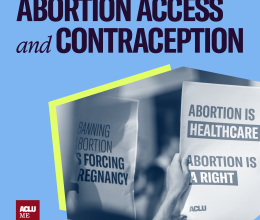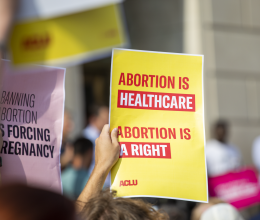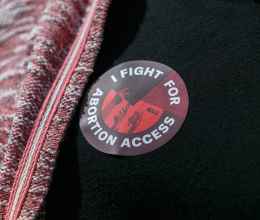Abortion rates are dropping. According to an extensive report published by the Guttmacher Institute, the US abortion rate has reached its lowest level since the implementation of Roe v. Wade in 1973. The charted numbers reflect a slow increase until 1982, and then a fairly steady decline. Abortion rates declined 13% between 2008 and 2011, alone. While this information may come as good news to people on both sides of the choice debate, the decreasing numbers lead to some crucial questions. Namely, who can claim this victory? Because the study doesn't provide concrete data explaining the drop in abortion rates, it becomes easy for either side to claim this as a victory.
We can explore these numbers in a positive way. One explanation for this reduction could be increased access to reliable contraceptives and other family planning resources. New, more reliable forms of birth control have become available. Intra-uterine devices (IUDs) are more effective, longer lasting, and, in the end, more convenient than birth control pills or condoms.
Pro-life proponents see this decrease differently. They suggest that the decrease reflects a shifting trend towards pro-life. The decreased number of abortions doesn’t necessarily mean that we, as a society, are becoming more pro-life. Instead, it could mean that more women are unable to choose from a full spectrum of reproductive choices. In 2000, only 13 states had at least four major abortion restrictions (these states are considered "hostile to abortion"). By the end of 2013, 27 states were added to the list. Some states, like Mississippi, have only one clinic to serve all of the women in the state. Guttmacher researchers urge us to be cautious when interpretating the results of the study. Rachel Jones, lead researcher on the published study, warned against being blindly optimistic about the drop in numbers: “If the abortion rate continues to drop, we can’t assume it’s all due to positive factors” such as increased proper contraceptive use.
Although the numbers are shifting, abortion rates remain high among low-income women. Historically, low-income women have had less access to family planning and longer lasting, more effective birth control methods. LD 1247, a bill that is currently before the Maine legislature, would address this issue. LD 1247, An Act To Expand Coverage of Family Planning Services, seeks to ensure that women who’s family income is equal to or below 200% of the federal poverty level can have access to the resources they need to prevent pregnancy and the spread of STIs.









